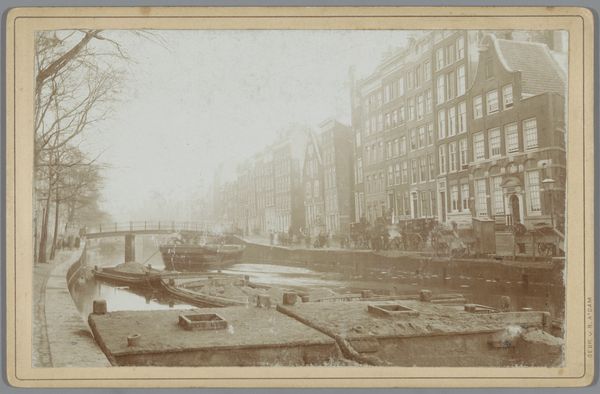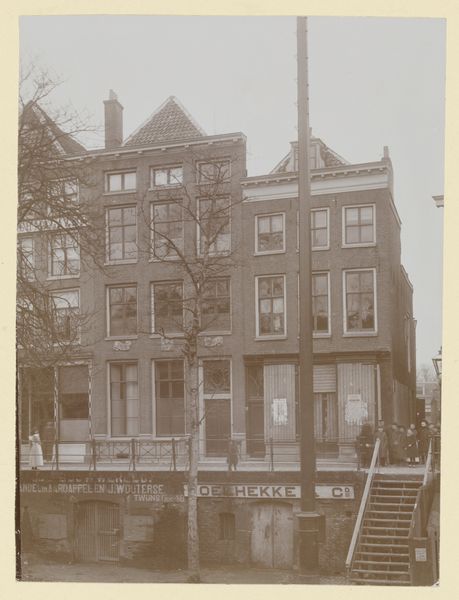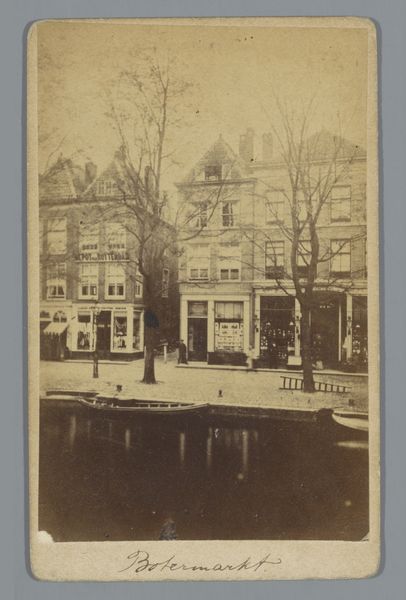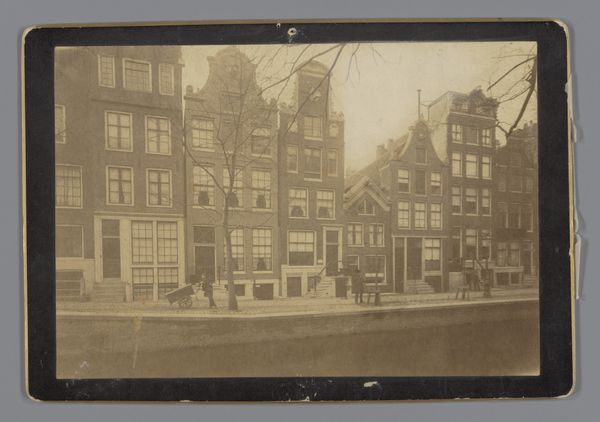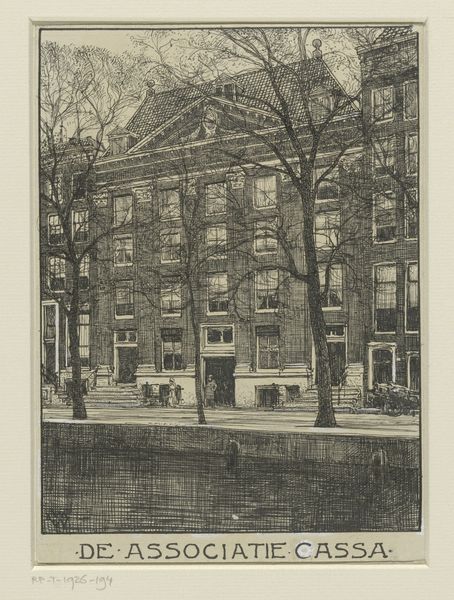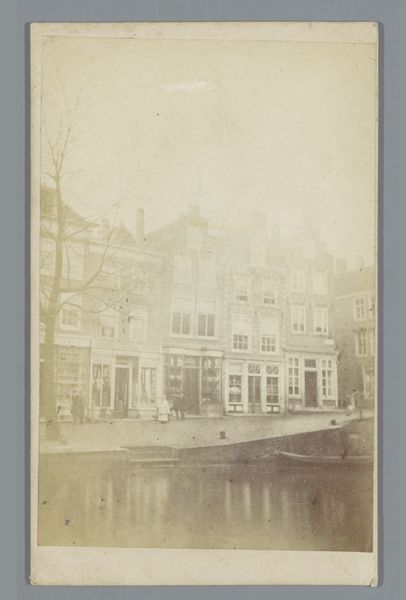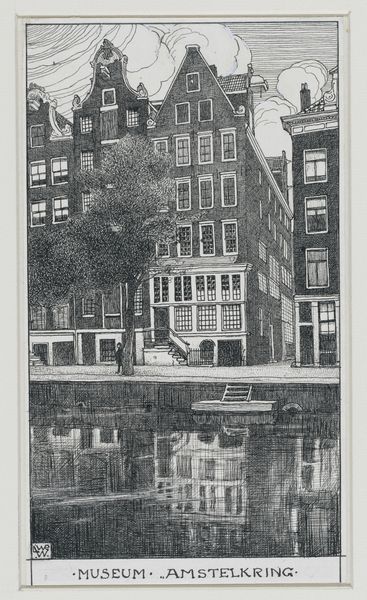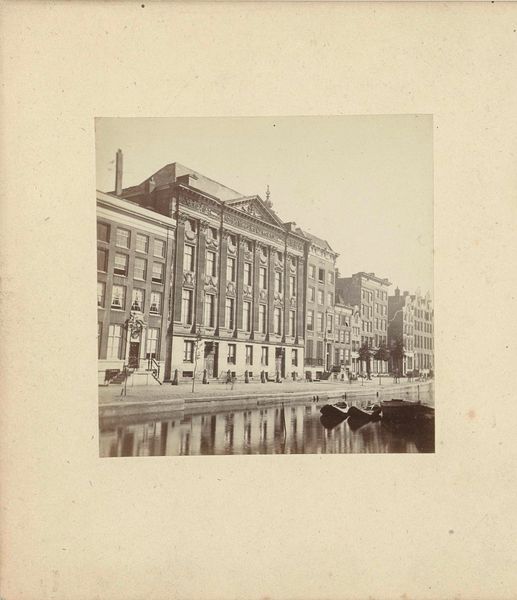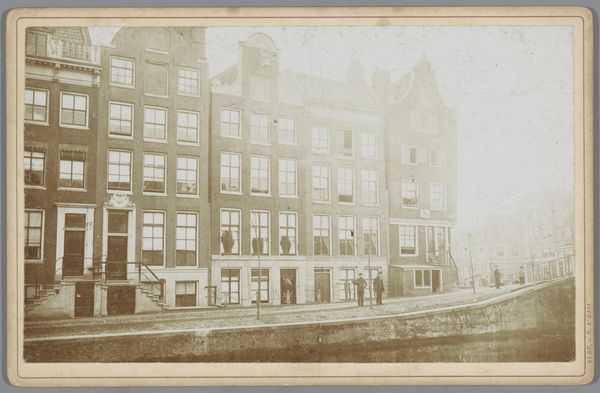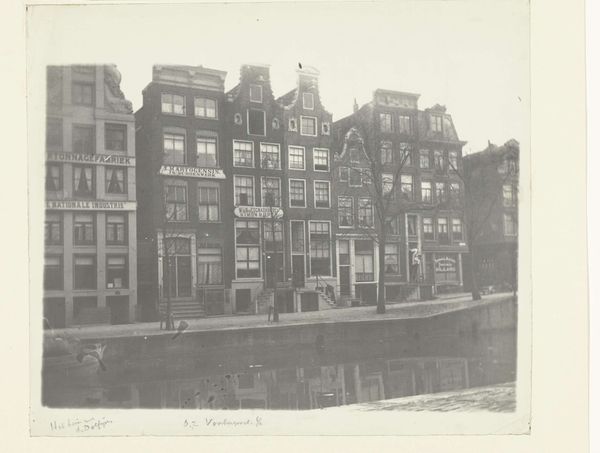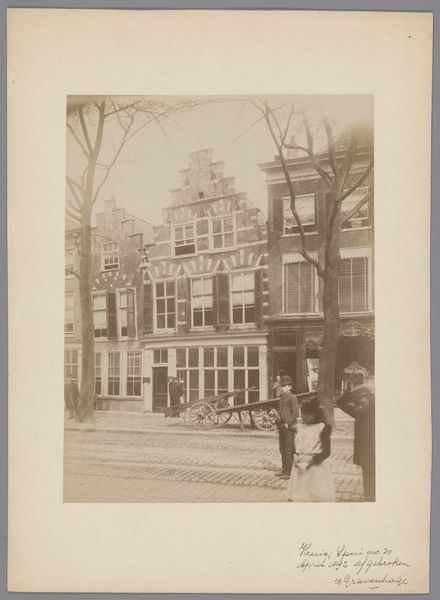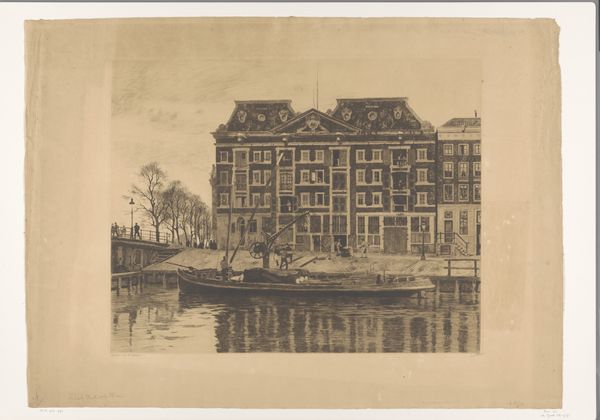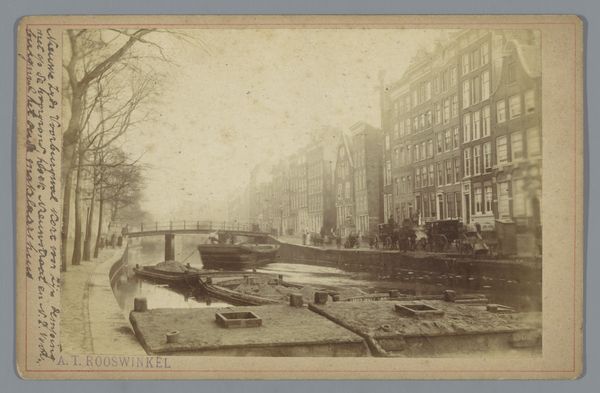
print, photography, gelatin-silver-print
# print
#
street-photography
#
photography
#
gelatin-silver-print
#
19th century
#
cityscape
#
street
#
watercolor
#
realism
Dimensions: height 165 mm, width 107 mm
Copyright: Rijks Museum: Open Domain
Curator: Here we have a gelatin silver print entitled "Koets voor huizen aan de Singel in Amsterdam," or "Carriage in front of houses on the Singel in Amsterdam," dating roughly between 1880 and 1940, by Johannes Leonardus van der Heijden. It presents a quintessential cityscape. Editor: Ah, it's wonderfully sepia-toned, a real plunge into the past. I imagine it smelling faintly of old paper and river water. There's a stillness to it, a quiet elegance, despite being a street scene. It makes me want to put on some old music and imagine life then. Curator: Precisely! The gelatin silver process allowed for a crispness and tonal range previously unattainable, capturing intricate details of the architecture and even the reflections in the canal. We can see a distinct social hierarchy represented, from the carriage itself as a signifier of wealth to the clothing of the people present. Photography at this time was becoming increasingly accessible, changing how society viewed itself and documented everyday life. Editor: It's also interesting how the leafless trees almost mirror the carriage wheel, repeating forms within the city chaos. Is that a wedding party near the door? They’re frozen in time; what became of their story, I wonder? I see them posed outside the front of a set of row houses, presumably after leaving a building such as a church or notary. You just feel you know some kind of intimate thing about those people and that time through seeing this image. Curator: Indeed, the presence of figures brings this image to life. We can infer certain narratives from the composition itself – the photographer chose this precise moment to document a slice of life in Amsterdam, perhaps intending to comment on social class or just to observe it. It acts as a kind of un-staged tableau of this canal and its surrounds. Editor: Looking at it, you can almost hear the clip-clop of hooves and the faint chatter. And perhaps also, you think you see Van der Heijden in this very photo too? That is the skill of good artwork, you transport yourselves, and feel something through viewing the still images. Curator: Yes, seeing this photographic technology deployed to represent everyday working-class street-scapes grants a view into not only the world of Amsterdam but into the labor processes and material circumstances of visual representation itself. A photo for our current exhibition around "city spaces and production", the world is presented here to our visitor as both the outcome and an occasion for labor. Editor: So, thanks for guiding us into considering an old scene from so long ago; its material tells us something beyond its surface charm and historical weight. I hope our listener can visit to see the piece!
Comments
No comments
Be the first to comment and join the conversation on the ultimate creative platform.
